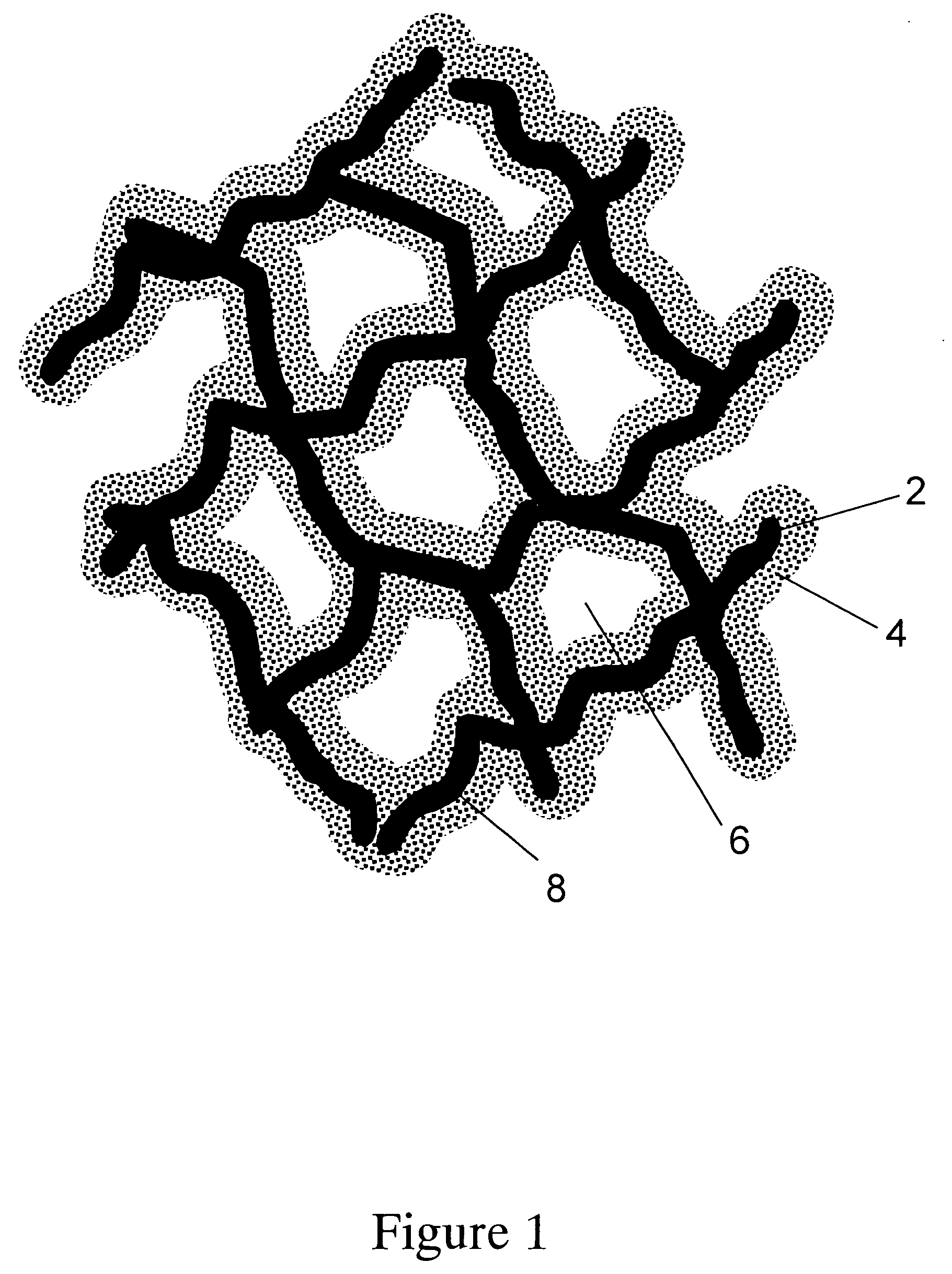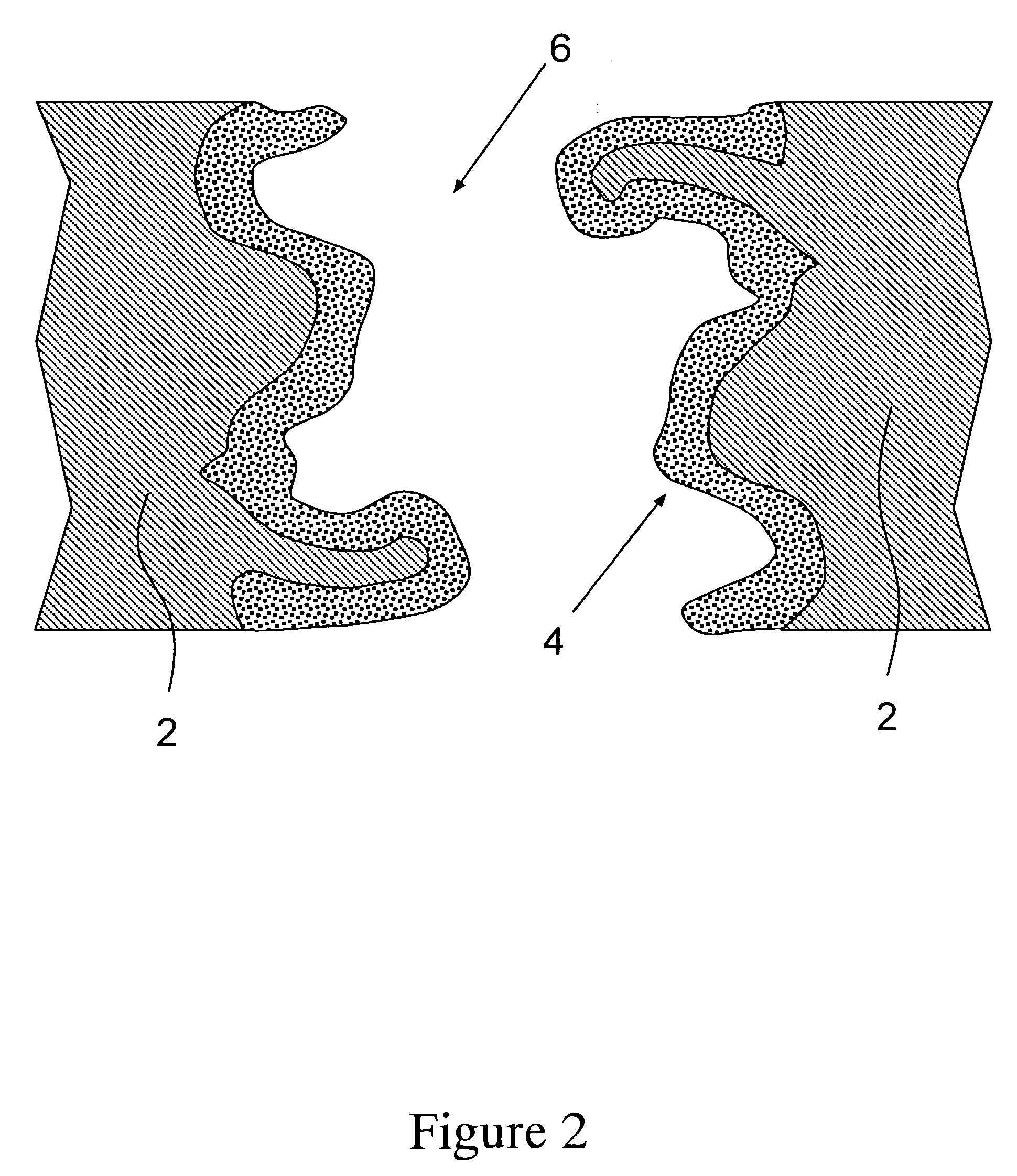Porous adsorptive or chromatographic media
a technology of chromatographic media and porous adsorptive materials, which is applied in the direction of filtration separation, other chemical processes, separation processes, etc., can solve the problems of mechanical and binding properties coupled, the change of the binding performance of the resulting material, and the limitation of many bead media, etc., to achieve good convective and diffusional flow characteristics and high dynamic capacity
- Summary
- Abstract
- Description
- Claims
- Application Information
AI Technical Summary
Benefits of technology
Problems solved by technology
Method used
Image
Examples
example 1
Room Temperature Stable Agarose Solution Suitable for Coating
[0135]Six grams of agarose powder (type XII, obtained from Sigma-Aldrich) were added to 40 grams of water, the mixture was agitated while heating at a temperature of 95° C. until an initial agarose solution was formed. This initial free flowing solution was cooled to room temperature, at which point the solution became a gel having no free flowing characteristics at all. To this gel, 15 grams of zinc chloride were added and the mixture was heated again to 95° C. while agitating until the gel and the salt dissolved to form a homogeneous solution. This solution was then cooled to room temperature; the solution's free flowing characteristics were retained at this temperature. To this solution, 39.9 grams of methanol and 0.1 grams of Fluorad FC-95 fluorosurfactant (3M Company) were added while mixing to form the final agarose solution. This final solution remained liquid at room temperature.
example 2
Coating Using Room Temperature Stable Agarose
[0136]A polyolefin non-woven fabric having a pore size of about 100 microns and a porosity of about 65% (Type FO2463 from Freudenberg of Lowell, Mass.) was coated with the agarose solution of Example 1 according to the following procedure. The fabric was exposed to the agarose solution of Example 1 such that the fabric was completely wetted by the solution. The wet fabric was then placed between two sheets of polyethylene film and squeezed gently to remove excess solution from the surface of the fabric, the fabric was then removed from the film sheets and allowed to dry at room temperature to remove the methanol and unbound water by evaporation. The dry coated fabric was then immersed in acetone to gel the agarose and to remove the salt and surfactant thus creating the coating of essentially pure agarose. The coated fabric was immersed in water to further rinse the fabric and to remove the acetone, the agarose coated fabric was then kept ...
example 3
Crosslinking of Agarose Coating
[0137]The water-wet agarose coated fabric from example 2 was immersed in a mixture containing 5 grams of epichlorohydrin and 95 grams of 2M sodium hydroxide, the temperature of this mixture was then raised to 50° C. and the crosslinking reaction was allowed to proceed at this temperature for 16 hours under gentle agitation. The crosslinked coated fabric was rinsed with water several times to remove excess reactants and base.
PUM
| Property | Measurement | Unit |
|---|---|---|
| melting temperature | aaaaa | aaaaa |
| temperature | aaaaa | aaaaa |
| pore sizes | aaaaa | aaaaa |
Abstract
Description
Claims
Application Information
 Login to View More
Login to View More - R&D
- Intellectual Property
- Life Sciences
- Materials
- Tech Scout
- Unparalleled Data Quality
- Higher Quality Content
- 60% Fewer Hallucinations
Browse by: Latest US Patents, China's latest patents, Technical Efficacy Thesaurus, Application Domain, Technology Topic, Popular Technical Reports.
© 2025 PatSnap. All rights reserved.Legal|Privacy policy|Modern Slavery Act Transparency Statement|Sitemap|About US| Contact US: help@patsnap.com



